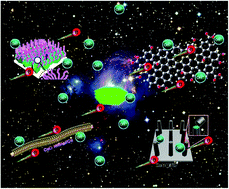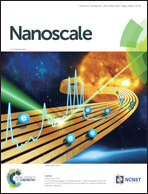Recent progress in layered double hydroxide based materials for electrochemical capacitors: design, synthesis and performance
Abstract
As representative two-dimensional (2D) materials, layered double hydroxides (LDHs) have received increasing attention in electrochemical energy storage and conversion because of the facile tunability between their composition and morphology. The high dispersion of active species in layered arrays, the simple exfoliation into monolayer nanosheets and chemical modification offer the LDHs an opportunity as active electrode materials in electrochemical capacitors (ECs). LDHs are favourable in providing large specific surface areas, good transport features as well as attractive physicochemical properties. In this review, our purpose is to provide a detailed summary of recent developments in the synthesis and electrochemical performance of the LDHs. Their composites with carbon (carbon quantum dots, carbon black, carbon nanotubes/nanofibers, graphene/graphene oxides), metals (nickel, platinum, silver), metal oxides (TiO2, Co3O4, CuO, MnO2, Fe3O4), metal sulfides/phosphides (CoS, NiCo2S4, NiP), MOFs (MOF derivatives) and polymers (PEDOT:PSS, PPy (polypyrrole), P(NIPAM-co-SPMA) and PET) are also discussed in this review. The relationship between structures and electrochemical properties as well as the associated charge-storage mechanisms is discussed. Moreover, challenges and prospects of the LDHs for high-performance ECs are presented. This review sheds light on the sustainable development of ECs with LDH based electrode materials.

- This article is part of the themed collection: Recent Review Articles


 Please wait while we load your content...
Please wait while we load your content...